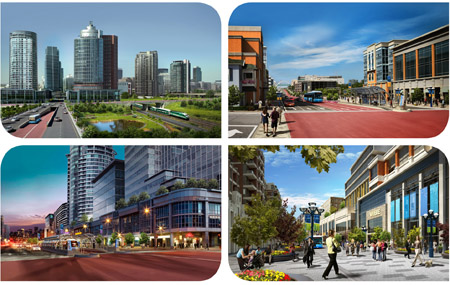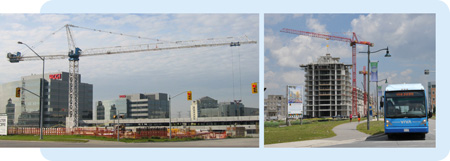
What’s the best way to see what the future will look like for York Region? A crystal ball? Cards? Tea-leaves?
In all seriousness, when it comes to reading the future for our community, I suggest you look at York Region’s Official Plan. This document, which is a critical planning tool, has a number of functions: it’s a public document used to describe and promote our vision for the future, but it is also a legal document used to support and defend key decisions related to public infrastructure, development and growth.
Based on a 25 year planning timeframe but updated every five years, York Region’s Official Plan sets out several key themes which will guide planning decisions, and will help make growth work for us.
One of the main themes throughout the plan is the desire to concentrate growth and development in key areas through the region. This will be done through the further development of a series of centres and corridors, meaning new downtowns in Markham, Newmarket, Richmond Hill and Vaughan. The idea is that by building more intensively in these areas, there will be less pressure for growth in the existing communities.
These new multi-use centres will be connected by transportation “corridors” that will make it easier for people to get around the region. And obviously, the best way to travel will be on the vivaNext rapidways, which will run along the corridors and connect the centres.
As they develop, the centres will become focal points for exciting new destinations, offering more choices in entertainment, dining, shopping, and other kinds of attractions. They will also provide higher density housing in condominiums and apartments, for people who like the idea of living at the centre of the action. These new downtowns will be designed with people in mind: they will include attractive, public open spaces where people feel welcomed, and be designed in ways that encourage walking, cycling and transit use.
The Official Plan recognizes that while many people may like the idea of heading to one of the newly urbanized centres to dine out, to shop, or to go to work, they may also want to have a home in a quiet residential neighbourhood. So the Official Plan directs that those kinds of communities will be protected from the kind of intensification that will be used in the centres, so people can continue to enjoy the lifestyles they already have.
And because people in York Region value the greenspaces that make up such an important part of this area, a full 69% of the Region’s landmass will be protected as either Greenbelt or Oak Ridges Moraine.
The Official Plan goes into a lot of detail on these main themes, as well as a range of others, and is well worth reading to give you a sense of how your Region is going to manage growth into the future, and how it is going to evolve.
I like to think that with this well-thought-out plan, people in York Region will truly be able to have it all: our familiar communities will be protected, but we’ll get the benefits of city-building; and we’ll have a great rapid transit system to move us easily between all sorts of exciting new destinations. We’d love to hear your thoughts on this future vision, and what it will mean for you and your family!

